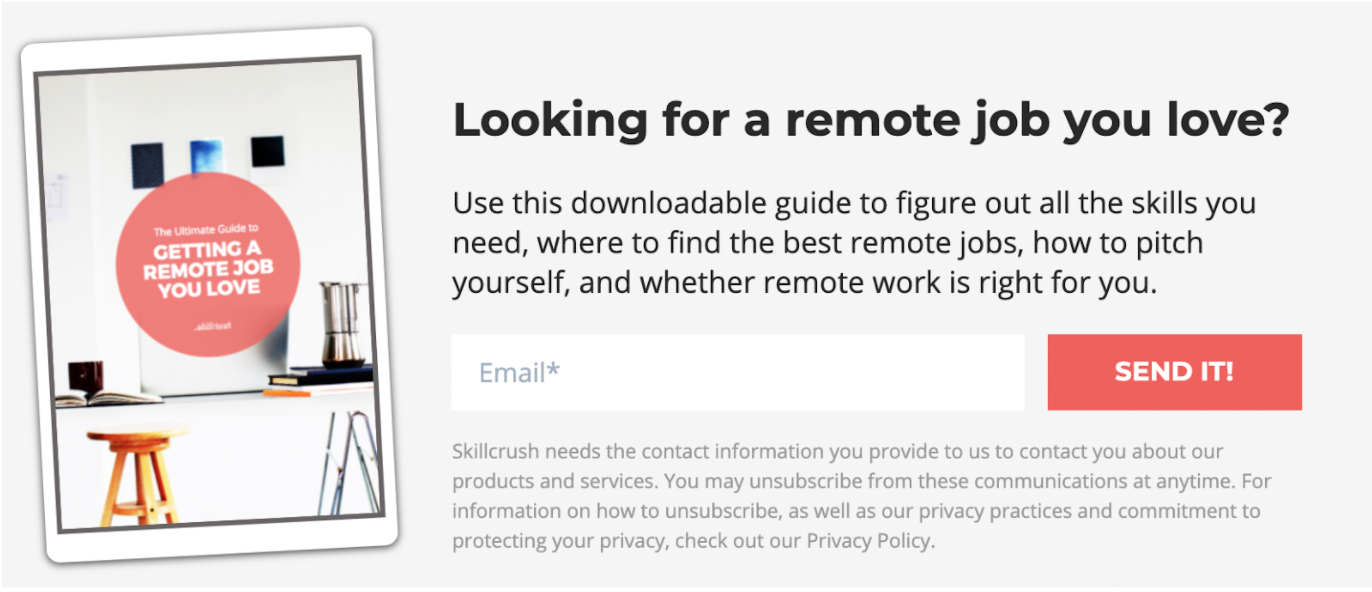When talking about content marketing, the majority of people automatically think of blog posts. And sure, text is one of the leading formats when it comes to content. It's easy to produce, inherently supports SEO, is simple to update, and can be repurposed in almost countless ways.
However, it's far from being the only format that matters. In fact, in 2021, it could be said that several other ones deserve much more of your attention.
So how can marketers find the absolute best format for their goals?
First, they need to understand that putting together a content marketing strategy cannot be approached as a step-by-step checklist. No guide can work ubiquitously, simply because different brands have different goals, distribution channels, and target audiences. For this reason, to get a marketing plan that truly works, marketers must consider the specific audience they're targeting. Then they must develop a plan of action based on that audience's preferences and the goals they have in mind.
And that means finding the best fitting format for each distribution channel and intent.
How Buyers Consume Content
Last year saw a dramatic increase in the time people spent in front of a screen. According to DoubleVerify, the average screen time in 2020 was 6 hours and 59 minutes, with streaming services seeing notable usage boosts. Another resource, App Annie, states that the most used apps in the first quarter of 2020 included Snapchat, Twitch, and TikTok for Gen Z, clearly indicating that some content formats drew more attention than others.
For marketers, this probably isn't too much of a surprise.
Research from 2020 shows that the most invested-in format in 2019 included video, which was closely followed by blogs and eBooks. Usage statistics also reveal that social media apps remained the most used during the past 12 months, with TikTok leading the race.
All of this information is in line with the data we've had access to for a while. For example, WordPress states that there are 70 million new posts on its platform each month (and that's just for blogs that use WP). And even back in 2019, 500 hours of video were being uploaded to YouTube every minute.
Naturally, this type of knowledge should have a significant impact on content marketing strategies. More importantly, it should help inform the decisions marketers make regarding formats. After all, people don't go to YouTube to read a text – they go there to watch videos on topics of interest.
So, if your target audience is showing a preference for select platforms, that's where you'll have to rank if you want to stand a fighting chance of effectively grabbing their attention.
The Top Formats in 2021
Blogs
Though text posts may not be the hippest way to reach customers, they still work extremely well. And that's no surprise.
Let's consider the fact that the average person makes around 3-4 Google searches per day. We also know that 8% of all Google queries are phrased as questions. Bearing this in mind, it's quite evident that providing answers makes for an excellent strategy to reach new customers. And blogs are still the best way to do that, seeing how videos get 6.3% of clicks and images just 3%.
In 2021, however, the way to get text content to work won't be to churn out daily blog posts, stuffing them with keywords, or building backlinks from shady sites. Instead, it'll be to pay closer attention to user queries, provide valuable information, and hopefully, win a spot in the Featured snippets and People also ask sections of SERPs.
Another thing to keep in mind about producing text is that, in 2021, longer is better. The average 800-word post is no match to longer articles. In fact, according to Semrush, posts that contain 7000+ words get the most average unique pageviews and shares.
Of course, you don't have to write an eBook for each topic you cover. But do try to hit that sweet spot between 1500 and 2000 words to get the best results. Then, if you've got more to say on the subject offer a gated resource that will further educate your audience. A good example of this can be seen in Skillcrush’s post on remote work. At the bottom of the post, they have an email capturing lead magnet directly related to the remote working topic.
image source: skillcrush.com
Videos
We've already covered the way consumers are shifting to multimedia-oriented platforms. In fact, on all the popular social networks, video posts tend to get the highest engagement rates, making them an excellent investment for marketers.
However, there's a significant contrast between formats when producing for different distribution channels.
Long-form videos work best for YouTube. On this platform, the average length of a video is 11.7 minutes, with some creators producing content three times that length. Seeing how the network accounts for 99.9% of Google's video traffic, as well as its popularity across multiple generations, it's a good investment for brands that want to take a step up from blogs.
Vat19, for example, bases its marketing strategy on creating entertaining videos that center around its products. Following current trends and adopting a friendly voice, they're getting millions of views and thousands of comments, proving that they've chosen the ideal format to reach their target audience.
Still, most other distribution platforms display a preference for shorter creations. Instagram's video limit is 60 seconds, as is Snapchat's. In December 2020, TikTok started testing a longer 3-minute format. But that's still multiple times shorter than the average on YouTube. So, taking everything into consideration, it's clear that short-form video is the way to go for most platforms.
So how can marketers make a limited format work in their favor?
Well, one way would be to invest in content that lends itself to visual representation. For example, a company such as Joi can greatly benefit from transforming its recipes page into a series of TikTok posts showing the preparation process. As most recipes are easy-to-follow, they require no in-depth explanations and can fit into the traditional 60-second limitations.
@addjoi Vegan Samoa Bars 🤯 Happy Friday from us to you! Recipe is in the comments. #veganrecipes #vegandessert #madewithjoi #addjoi #healthyrecipes
♬ Put Your Records On - Ritt Momney
Visuals
Then there's the most sought-after digital asset out there: images. It's no secret that visual information boosts any post's performance. Articles with images get 94% more views, social media posts get higher engagement rates, and consumers make purchasing decisions based on photos.
But the thing is, marketers aren't necessarily making the most of visuals.
According to Venngage, as many as 40% of companies use stock photos, a practice that can hardly be counted as a viable content marketing strategy. Moreover, visuals created for one distribution channel don't necessarily have to work for another.
As an example, look to mattress brand Zoma. Comparing the Instagram performance of their posts, it's easy to notice that the visual content reposted from their website gets several times fewer comments and likes than the images created specifically for the platform. What's more, their best-performing posts include those made with a clear strategy in place, such as their athlete spotlights that make smart use of user-generated content.
image source: instagram.com
Industry Insights
As we move through the best ways to utilize digital formats in your content marketing campaigns, it's crucial not to disregard any brand's most valuable asset: its experience and know-how.
Though not necessarily appropriate for social media sharing (unless in the format of infographics), industry insights can and should play a role in your marketing plan. In addition to offering eBooks, white papers, research reports, and survey results on their websites, businesses can also build their reputations around being a trustworthy source of information.
For example, Deloitte's content marketing strategy is based around the sole idea of positioning themselves as the go-to resource in a wide range of business-related topics. Their extensive Insights page offers resources on anything – from workspace design to cybersecurity in the electric power sector.
image source: deloitte.com
But their most valuable digital assets include their in-depth reports. These are available to download to anyone in exchange for a name and email address, making them an exceptionally successful lead generation method.
The Alternatives
Although we've covered the four most popular online content categories, there are still quite a few options out there. And they can be just as effective at getting you the desired results as the traditional formats.
Podcasts, for example, are becoming more popular every year. According to Statista, the number of monthly active podcast listeners is expected to hit 164 million by 2024, more than doubling over five years. The e-learning market is growing as well, with an average annual growth rate of 9.1%.
Then, there are the more innovative formats you could explore. An interactive map, such as the one created for the 2016 Rio de Janeiro Olympics, is an excellent example of what can be done with some basic information and a creative approach.
image source: rio2016interactivemap.com
Conclusion
There are numerous options brands can explore if they want to make content marketing work in their favor. In fact, being agile in adopting novel trends and brave enough to experiment with lesser-known methods makes for a great strategy.
Of course, that doesn't mean disregarding traditional content formats like blogs. But it does necessitate a willingness to experiment and a high level of diligence when doing research and measuring results. Because, in the end, the best way to find what works best isn't to follow advice. It's to try things out and make data-based decisions that will work towards a predetermined goal.














